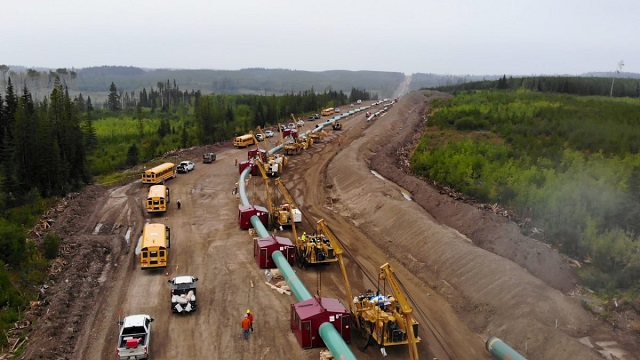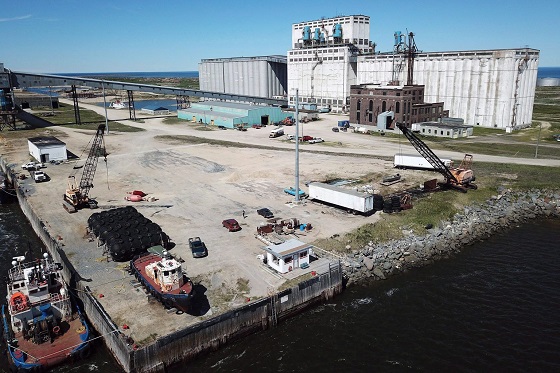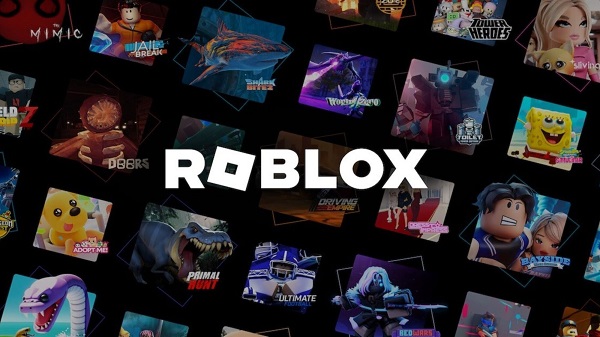National
Statscan: Canada is getting Older, Poorer, and Smaller

StatsCan’s own data shows the visa bubble popping, fertility collapsing, and GDP per person shrinking—Canada’s decline is policy-made.
So here’s the truth about Canada right now. The country just got older. The population barely grew. And no, it’s not because Canadians suddenly started having more kids. In fact, it’s the opposite. Birth rates are collapsing.
StatsCan’s own Population Estimates, July 1, 2025 release says Canada added only 47,098 people in the last quarter. That’s the slowest second-quarter growth since 1946. Why? Because the one thing propping up the numbers, non-permanent residents on study and work permits, has started to collapse. In fact, almost 60,000 left in just three months: –32,000 study permits and, 20,000 work permits, the second-largest quarterly drop in NPRs ever recorded. The whole thing was a bubble. And now that it’s bursting, we’re left staring at the reality: an aging population, weak natural increase, and no real growth.
The median age jumped again now over 40 and climbing fast. Seniors make up almost one in five Canadians. In Newfoundland and Labrador it’s even worse one in four people is over 65.
And the fertility numbers? They’re catastrophic. StatsCan’s Fertility and baby names, 2024 release shows Canada’s fertility rate hit a record low of 1.25 children per woman last year. That’s what demographers call “ultra-low fertility”, essentially demographic free fall.
Nine provinces set new records for fewest babies ever — Nova Scotia (1.08), Prince Edward Island (1.10), Ontario (1.21), Quebec (1.34), Northwest Territories (1.39), Alberta (1.41), Manitoba (1.50), Saskatchewan (1.58), and Nunavut (2.34). And in British Columbia, it’s basically extinction-level: just 1.02.
To even maintain a population, you need about 2.1 children per woman. To actually grow, you need more than that, closer to 2.3 or higher. Canada today is barely at half of replacement.
Meanwhile, the average age of mothers reached a record 31.8 years in 2024, up from 26.7 years in 1976. And here’s the part no one in government wants to talk about: biology doesn’t care about your housing market or your taxes. A woman in her late 20s has about an 85% chance of conceiving within a year. By the late 30s, it drops closer to 65%, and by 40 it’s around 40% with a much higher risk of miscarriage. By 45, natural conception is rare. So when government policy makes people delay families into their 30s, it’s not just economics working against them it’s biology. That’s nearly five decades of steady delay, and it isn’t a cultural accident, it’s economics. People wait longer and longer to have kids because they simply can’t afford them.
So what happens when you make it impossible for people to start families? When the average mother is now 32, fertility is half of what’s needed, and biology is closing the door? People stop having kids. And that isn’t just about culture, it’s about economics.
Let’s go to the Labour Force Survey. The numbers are devastating. In August, Canada lost 66,000 jobs. The unemployment rate jumped to 7.1%, the highest in years . Almost all those job losses were part-time work, exactly the kind of entry jobs young people use to get their start.
And it gets worse. Students, the people who should be building toward families just endured the worst summer job market since 2009. Unemployment for returning students averaged 17.9% . That’s an entire generation being sidelined before they even begin.
Even for those with jobs, the paycheques aren’t enough. Nearly 1 in 11 workers says they need more hours just to cover basic expenses. Among part-timers, almost a quarter said outright: I need more work to pay my bills .
So add this up: collapsing job prospects, shrinking hours, higher costs, and delayed families. The result isn’t a mystery. It’s why fertility is tanking, why people are waiting longer, and why the average Canadian is getting older by the day. And the real measure of prosperity—real GDP per person—backs it up: it fell 0.4% in Q2-2025, and for all of 2024 it was down 1.4% after –1.3% in 2023. In other words, your slice of the economy is getting smaller, not bigger.
This is why I hammer the spin, the government, the state media chorus—because when you strip away the talking points and look at the numbers, it’s devastating. The population barely grew once the visa bubble popped. We’re getting older fast. Fertility is at record lows. The labour market is weaker than advertised—fewer jobs, fewer hours, paycheques that don’t reach the end of the month. And the real scoreboard—GDP per person—says Canadians are getting poorer, not richer.
That’s not a narrative problem; it’s a reality problem. Families don’t form in a country where housing is out of reach, taxes and groceries gut your budget, and your share of the economy keeps shrinking. So spare me the press conferences. Build an economy where young people can buy a home, start a business, and have kids without a panic attack. Cut the cost-drivers. Reward work. Make family life possible again.
Until that happens, all the “record population” headlines are just a shell game. The people paid to challenge this BS aren’t doing it, so we will. Because the numbers aren’t partisan; they’re a warning. And if we ignore them, there won’t be much of a country left to argue over.
Business
Large-scale energy investments remain a pipe dream

I view the recent announcements by the Government of Canada as window dressing, and not addressing the fundamental issue which is that projects are drowning in bureaucratic red tape and regulatory overburden. We don’t need them picking winners and losers, a fool’s errand in my opinion, but rather make it easier to do business within Canada and stop the hemorrhaging of Foreign Direct Investment from this country.
Thanks for reading William’s Substack!
Subscribe for free to receive new posts and support my work.
Changes are afoot—reportedly, carve-outs and tweaks to federal regulations that would help attract investment in a new oil pipeline from Alberta. But any private proponent to come out of this deal will presumably be handpicked to advance through the narrow Bill C-5 window, aided by one-off fixes and exemptions.
That approach can only move us so far. It doesn’t address the underlying problem.
Anyone in the investment world will tell you a patchwork of adjustments is nowhere near enough to unlock the large-scale energy investment this country needs. And from that investor’s perspective, the horizon stretches far beyond a single political cycle. Even if this government promises clarity today in the much-anticipated memorandum of understanding (MOU), who knows whether it will be around by the time any major proposal actually moves forward.
With all of the talk of “nation-building” projects, I have often been asked what my thoughts are about what we must see from the federal government.
The energy sector is the file the feds have to get right. It is by far the largest component of Canadian exports, with oil accounting for $147 billion in 2024 (20 percent of all exports), and energy as a whole accounting for $227 billion of exports (30 percent of all exports).
Furthermore, we are home to some of the largest resource reserves in the world, including oil (third-largest in proven reserves) and natural gas (ninth-largest). Canada needs to wholeheartedly embrace that. Natural resource exceptionalism is exactly what Canada is, and we should be proud of it.
One of the most important factors that drives investment is commodity prices. But that is set by market forces.
Beyond that, I have always said that the two most important things one considers before looking at a project are the rule of law and regulatory certainty.
The Liberal government has been obtuse when it comes to whether it will continue the West Coast tanker ban (Bill C-48) or lift it to make way for a pipeline. But nobody will propose a pipeline without the regulatory and legal certainty that they will not be seriously hindered should they propose to build one.
Meanwhile, the proposed emissions cap is something that sets an incredibly negative tone, a sentiment that is the most influential factor in ensuring funds flow. Finally, the Impact Assessment Act, often referred to as the “no more pipelines bill” (Bill C-69), has started to blur the lines between provincial and federal authority.
All three are supposedly on the table for tweaks or carve-outs. But that may not be enough.
It is interesting that Norway—a country that built its wealth on oil and natural gas—has adopted the mantra that as long as oil is a part of the global economy, it will be the last producer standing. It does so while marrying conventional energy with lower-carbon standards. We should be more like Norway.
Rather than constantly speaking down to the sector, the Canadian government should embrace the wealth that this represents and adopt a similar narrative.
The sector isn’t looking for handouts. Rather, it is looking for certainty, and a government proud of the work that they do and is willing to say so to Canada and the rest of the world. Foreign direct investment outflows have been a huge issue for Canada, and one of the bigger drags on our economy.
Almost all of the major project announcements Prime Minister Mark Carney has made to date have been about existing projects, often decades in the making, which are not really “additive” to the economy and are reflective of the regulatory overburden that industry faces en masse.
I have always said governments are about setting the rules of the game, while it is up to businesses to decide whether they wish to participate or to pick up the ball and look elsewhere.
Capital is mobile and will pursue the best risk-adjusted returns it can find. But the flow of capital from our country proves that Canada is viewed as just too risky for investors.
The government’s job is not to try to pick winners and losers. History has shown that governments are horrible at that. Rather, it should create a risk-appropriate environment with stable and capital-attractive rules in place, and then get out of the way and see where the chips fall.
Link to The Hub article: Large-scale energy investments remain a pipe dream
Formerly the head of institutional equity research at FirstEnergy Capital Corp and ATB Capital Markets. I have been involved in the energy sector in either the sell side or corporately for over 25 years
Thanks for reading William’s Substack!
Subscribe for free to receive new posts and support my work.
Business
New airline compensation rules could threaten regional travel and push up ticket prices

New passenger compensation rules under review could end up harming passengers as well as the country’s aviation sector by forcing airlines to pay for delays and cancellations beyond their control, warns a new report published this morning by the MEI.
“Air travel in Canada is already unaffordable and inaccessible,” says Gabriel Giguère, senior public policy analyst at the MEI. “New rules that force airlines to cover costs they can’t control would only make a bad situation worse.”
Introduced in 2023 by then-Transport Minister Omar Alghabra, the proposed amendment to the Air Passenger Protection Regulations would make airlines liable for compensation in all cases except those deemed “exceptional.” Under the current rules, compensation applies only when the airline is directly responsible for the disruption.
If adopted, the new framework would require Canadian airlines to pay at least $400 per passenger for any “unexceptional” cancellation or delay exceeding three hours, regardless of fault. Moreover, the definition of “exceptional circumstances” remains vague and incomplete, creating regulatory uncertainty.
“A presumed-guilty approach could upend airline operations,” notes Mr. Giguère. “Reversing the burden of proof introduces another layer of bureaucracy and litigation, which are costs that will inevitably be passed on to consumers.”
The Canadian Transportation Agency estimates that these changes would impose over $512 million in additional costs on the industry over ten years, leading to higher ticket prices and potentially reducing regional air service.
Canadians already pay some of the highest airfares in the world, largely due to government-imposed fees. Passengers directly cover the Air Travellers Security Charge—$9.94 per domestic flight and $34.42 per international flight—and indirectly pay airport rent through Airport Improvement Fees included on every ticket.
In 2024 alone, airport authorities remitted a record $494.8 million in rent to the federal government, $75.6 million more than the previous year and 68 per cent higher than a decade earlier.
“This new regulation risks being the final blow to regional air travel,” warns Mr. Giguère. “Routes connecting smaller communities will be the first to disappear as costs rise and they become less profitable.”
For instance, a three-hour and one minute delay on a Montreal–Saguenay flight with 85 passengers would cost an airline roughly $33,000 in compensation. It would take approximately 61 incident-free return flights to recoup that cost.
Regional air service has already declined by 34 per cent since 2019, and the added burden of this proposed regulation could further reduce connectivity within Canada. It would also hurt Canadian airlines’ competitiveness relative to U.S. carriers operating out of airports just south of the border, whose passengers already enjoy lower fares.
“If the federal government truly wants to make air travel more affordable,” says Mr. Giguère, “it should start by cutting its own excessive fees instead of scapegoating airlines for political gain.”
You can read the Economic Note here.
* * *
The MEI is an independent public policy think tank with offices in Montreal, Ottawa, and Calgary. Through its publications, media appearances, and advisory services to policymakers, the MEI stimulates public policy debate and reforms based on sound economics and entrepreneurship.
-

 Business1 day ago
Business1 day agoNew airline compensation rules could threaten regional travel and push up ticket prices
-

 Great Reset2 days ago
Great Reset2 days agoEXCLUSIVE: The Nova Scotia RCMP Veterans’ Association IS TARGETING VETERANS with Euthanasia
-

 Crime1 day ago
Crime1 day agoHow Global Organized Crime Took Root In Canada
-

 Digital ID2 days ago
Digital ID2 days agoLeslyn Lewis urges fellow MPs to oppose Liberal push for mandatory digital IDs
-

 Business1 day ago
Business1 day agoWill the Port of Churchill ever cease to be a dream?
-

 Digital ID24 hours ago
Digital ID24 hours agoRoblox to Mandate Facial and ID Verification
-

 Business1 day ago
Business1 day agoThe numbers Canada uses to set policy don’t add up
-

 Health2 days ago
Health2 days agoDisabled Canadians petition Parliament to reverse MAiD for non-terminal conditions














